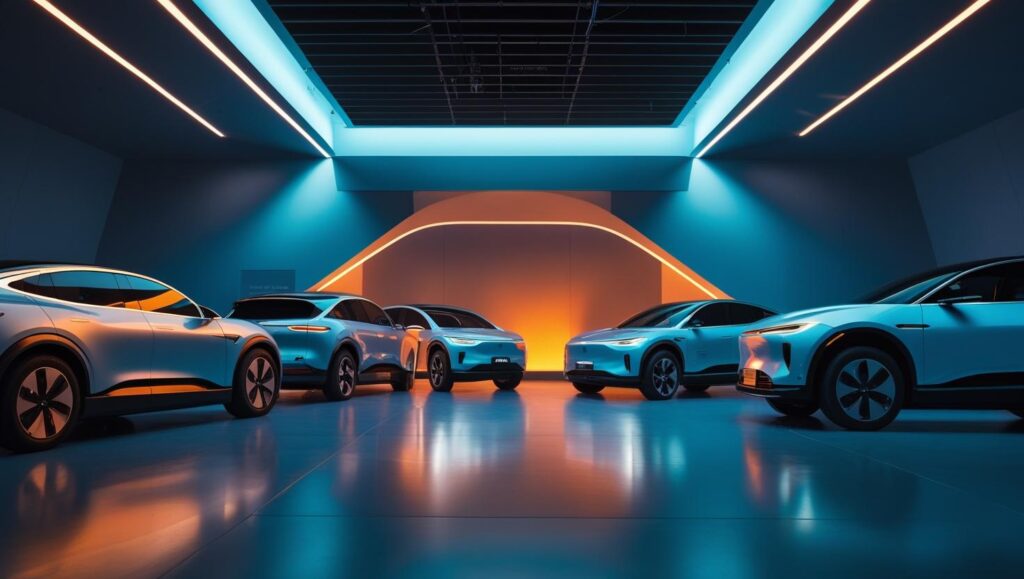
Today’s purchase decisions are curated, filtered, and made in public.
Picture this: your daily latte, that eco-friendly tote, even your latest mid-century‑vibe lamp.
Are these purchases indulgent treats—or tiny, righteous strikes against corporate excess?
The data says it’s more than just impulse: it’s activism in polyester and bamboo.
1. The Shockingly Powerful Power of Purchases
Global consumer spending isn’t small potatoes—it makes up roughly 60 percent of GDP, smack‑dab at the heart of worldwide wealth generation¹.
When enough wallets shift toward greener, fairer products, markets don’t whisper—they stagger.
Analysts at McKinsey and NielsenIQ unearthed a compelling truth: products with ESG (environmental, social, governance) claims yielded around 28 percent cumulative growth over five years—compared to a paltry 20 percent for those without². That’s not just a seasonal uptick; it’s a broadband signal your dollars are sending.
2. Wallet-Wielding Activists? Why Not.

Activism now comes with oat milk and a rewards app.
Think of your wallet as a low-budget ballot.
The phrase “vote with your wallet” might sound cliché—but it’s hitting home fast⁴. When enough people choose ethically produced swag, brands start leaning in.
It isn’t virtue signaling—it’s fiscal survival.
Those McKinsey folks note that about 60 percent of consumers are willing to pay more for ESG-labeled goods³. So if you’re already forking out extra for compostable packaging, congratulations—you’re part of a market nudging corporations toward responsibility.
3. Conscious Consumerism: Trending Since the ’60s (With a Social‑Media Sprinkle)

In the age of conscious consumerism, the ingredient list is the new moral compass.
Sure, ethical shopping isn’t new—it’s got hippie roots stretching back decades⁵. But knock out Reels and a thirst for instant info, and suddenly every avocado on Instagram comes with a halo of provenance.
Gen Z, that digital-first cohort, is obsessed: around 75 percent say sustainability trumps branding⁶. Even Gen X is in on it: sustainable spending is up 24 percent since 2019⁷.
Tech isn’t just for doomscrolling—it’s the GPS guiding your moral spending curve.
4. When Consumers Demand Change, Corporations Listen—Mostly
Industries are reshaping themselves around consumer conscience. Take autos: by 2030, up to 80 percent of vehicle purchases are projected to happen online, with 60–80 percent direct-to-consumer—all spurred by a desire to dodge showroom manipulation¹⁰.

The car of the future may be ordered with a click—and a conscience.
Brands engaging in “activism” aren’t just preaching—they’re profiting. Studies find that taking stances on issues aligned with public sentiment significantly improves brand perception and sales¹¹.
5. Putting Dollars Behind Deeds: Does It Work?
You bet. Around 81 percent of global consumers expect corporations to care about the planet, and 66 percent are prepared to pay a premium for it¹². ESG-aware companies enjoy up to 20 percent better financial performance¹².
That’s not altruism—that’s ROI with a conscience.
Meanwhile, even when interest rates rise and budgets tighten, over 58 percent stick with eco‑friendly purchases¹³. That’s no niche—it’s power.
6. Culture, Region & Consumer Clout
Different corners of the globe show different styles—but the trend is universal. In China, six of the top ten beauty brands growing fastest since 2020 are domestic²⁵. Globally, 47 percent favor local companies, and 36 percent want to support homegrown businesses²⁵.
When brands misstep, boycotts bite: Starbucks saw a 4 percent drop in Q2 2024 sales, and McDonald’s got hammered after Middle East controversies¹⁵.
7. But Wait—Caveats Ahead

When ethical branding stops at the barcode.
Alas, nothing’s perfect. Retail voting relies on informed consumers—a heroic ask⁶. Greenwashing still runs rampant: making claims without changing processes¹⁸. Higher prices are a dealbreaker for too many—especially given rising living costs⁹.
Critics also say systemic change shouldn’t be foisted on individuals—policy matters too¹⁶.
You and your tote can only do so much when the factory’s halfway across the supply chain.
8. How to Make It Stick
If your conscience-driven cart stops at checkout, it’s activism in action. But for lasting impact, more is needed:
- Policy scaffolding: regulations that hold eco-claims accountable, like the FCA’s crackdown on greenwashingⁿ
- Corporate accountability: transparent supply chains, realistic ESG targets
- Smart consumer habits: durable purchases, informed choices
When brands match values with verification, spending + structure = change.
Final Take
Are we staring at world‑shaking transformations triggered by Amazon carts and cartwheels around Patagonia? Possibly.
These choices don’t just click, they count.
Consumers with strong values and working credit cards are indeed shaking corporate foundations.
But like any movement, this one needs support: from the policy sphere, from informed media, and from honest capitalism. Keep buying with purpose—but don’t expect miracles alone. Still, in aggregate, those small decisions add up to something bigger—and that might just be the blueprint for change.
Footnotes
- Consumer spending ≈ 60 percent of global GDP¹ (Michigan Consumer Sentiment index data²)
- McKinsey & NielsenIQ: ESG‑labeled products grew 28 percent cumulatively over five years vs. 20 percent²ⁿ³
- “60 percent of respondents would pay more for ESG-labeled goods”³
- Concept of voting with your wallet⁴
- Conscious consumerism tracing back to 1960s–70s⁵
- 75 percent of Gen Z define sustainability as purchase priority⁶
- Gen X sustainable spending up 24 percent since 2019⁷
- Rise of digital transparency fueling changes⁸
- Ongoing greenwashing and crowdfunding trust issues¹⁸
- Auto industry shifting to online, direct sales¹⁰
- Brand activism showing measurable gains¹¹
- 81 percent expect corporate environmental engagement; ESG firms profit 20 percent more¹²
- 58 percent continue eco-spending under inflation pressure¹³
- Starbucks and McDonald’s boycotts urge financial impact¹⁵
- Systemic policy vs. consumer burden critique¹⁶
